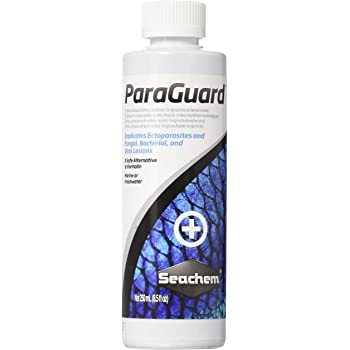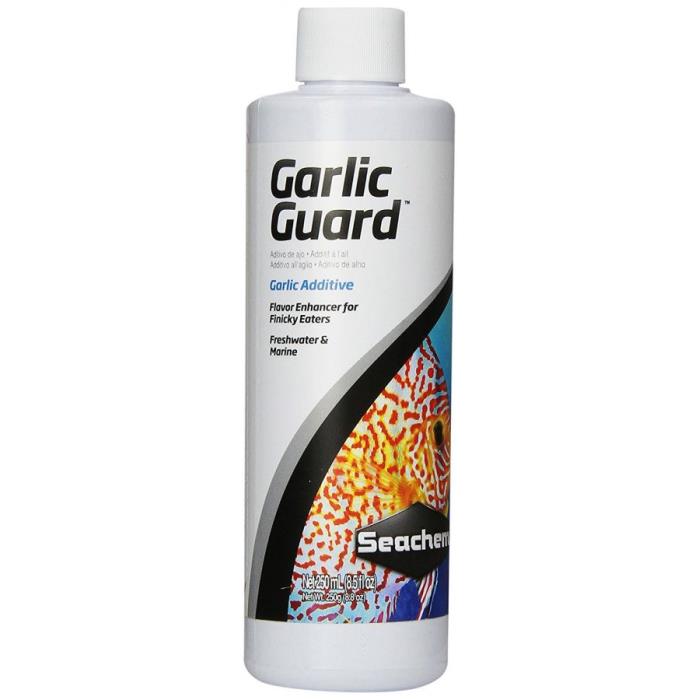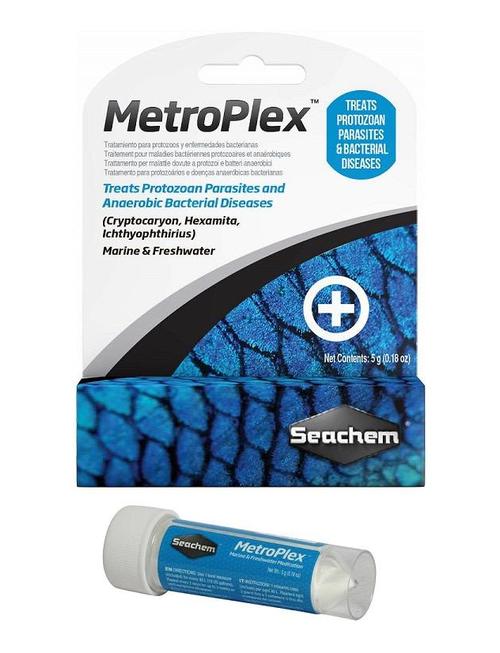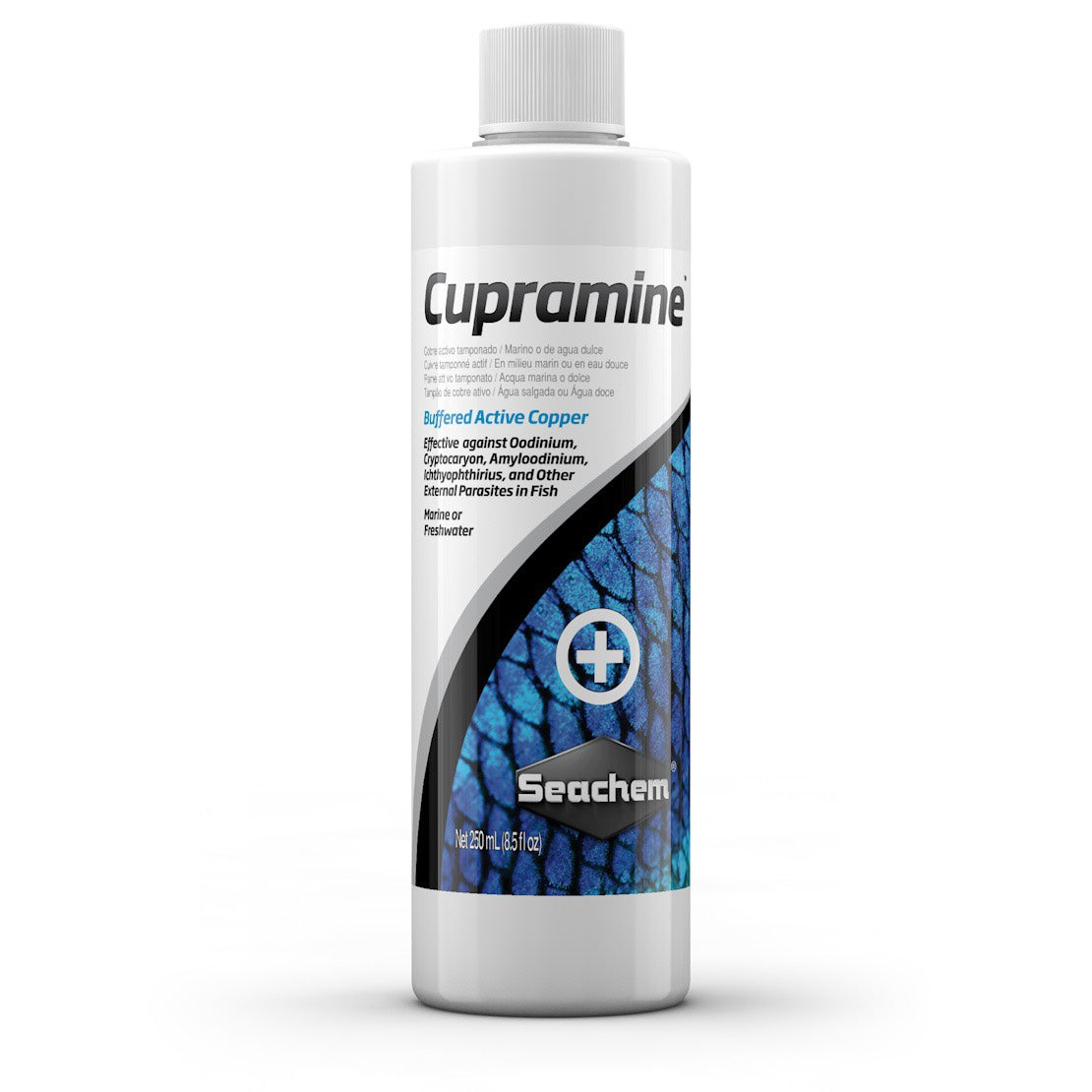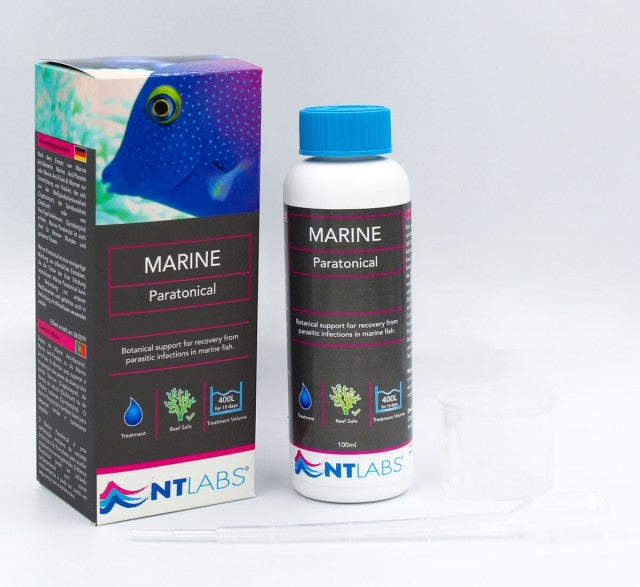The name Ichthyophthirius multifilis translates to "fish louse with many children," a title that fits well, as each parasite may produce more than a thousand offspring. Although the disease is the equivalent of a skin infection, ich can easily be fatal to a fish stressed by poor diet or habitat.
Symptoms
- Small white spots resembling sand
- Fish scratch against rocks and gravel
- In advanced stages fish become lethargic
- Redness or bloody streaks in advanced stages
Infected fish are covered to various degrees with small white spots. Severe infestations are easy to spot, but small occurrences often go unnoticed. However, ich won't remain unnoticed for long.
The adult parasite burrows into the skin of its victim, feeding on blood and dead epithelial cells.1 The irritation caused by the burrowing parasite causes the skin of the fish to swell and produce white cysts seen as small spots. The fish feels as if it's been bitten by a mosquito. It's not unusual to see infected fish scratching against rocks and gravel to get relief.
After several days of feasting, the engorged parasite develops into a trophozoite, burrows out of the fish and sinks to the bottom of the tank. Secreting a soft jellylike substance, it forms a protective membrane inside of which it divides into hundreds of baby parasites, known as tomites.1 The hungry tomites soon leave their home in search of a fresh fish to dine upon.
It is during the free-swimming stage, which lasts a mere three days, that the parasite is vulnerable to medication. Once it has burrowed into a new host fish it is safely protected from chemicals in the water.
Treatment
- Raise water temperature
- Medicate for 10–14 days
- Reduce medication when treating scaleless fish
- Discontinue carbon filtration during treatment
- Perform water changes between treatments
:max_bytes(150000):strip_icc():format(webp)/treat-ichthyophthirius-multifiliis-1378482_final-0620ebe0a2de47e194e25548f94b12a1.png)
The entire cycle takes about two weeks from start to finish. Higher temperatures will shorten the cycle, while low temperatures lengthen it. Therefore, raising the water temperature shortens the time it takes for the parasite to reach the stage in which it is susceptible to medication.
Treatments must be given for a long enough period to assure that all parasites are gone. Watch carefully for other infections, as secondary infections often occur where the skin has been damaged by the parasite.
Although nothing kills the parasite once it has checked into its fish "hotel," several chemicals kill ich once it has left the fish. Formalin, available under several brand names. is an effective treatment in tanks.1
Dose based on the package instructions; however, cut dosages in half when treating scaleless catfish and tetras. Regardless of the medication used, treatment should be given continuously for 10–14 days to ensure all parasites are killed. Between treatments, a partial water change is recommended. Keep water temperatures higher than usual to speed up the lifecycle of the parasite. Discontinue carbon filtration during treatment, as it will remove the chemicals.
Another Treatment Option: Total Fish Removal
Tomites, the motile and fish-infecting stage of the ich life cycle, exit from the trophonts that burst from affected fish and fall to the bottom of the tank. Without fish to reattach to, however, tomites will die within 48 hours of exiting their trophonts. Thus, an effective way to clear a tank from ich is to remove all of the fish for a certain amount of time. At 26 degrees Fahrenheit, ich tomites will die at two days in the absence of fish, and just to be sure, some recommend keeping the tank empty of fish and at 26 degrees for four days (96 hours). This solution may be helpful when there are either very few fish in the tank or when tank capacity is too large to easily treat the volume of water.
Prevention
- Quarantine new fish for two weeks
- Treat plants before adding to the tank
- Maintain high water quality
- Provide fish with a nutritionally balanced diet
The best way to avoid ich is to quarantine all new fish in a separate tank for two weeks before moving them to the regular tank. When a quarantine is not possible, prophylactic treatment may be used. Either methylene blue or malachite green when new fish are introduced and again four days later will help reduce the incidence of infection. New plants should also be treated, as they can carry ich cysts.
Maintaining high water quality, avoiding temperature fluctuations, and providing a robust diet is the best preventative for ich and other diseases.

